Friday, March 25. 2011
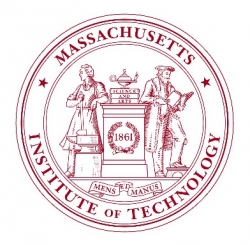
Change in IEEE Author Policy:
Impact on MIT Faculty Open Access Policy
Posted March 23rd, 2011 by Ellen DuranceauIn January 2011, the IEEE changed a key author policy, discontinuing the right authors had to post the final published version of their IEEE articles on the web. This alters what authors can do with their work and how the MIT Faculty Open Access Policy can be implemented for these papers.
The policy change is not retrospective: papers posted before January do not need to be taken down from the web. But from January on, authors may post only their accepted manuscripts, not the final published version of their articles.
As a consequence of this policy change, the MIT Libraries can no longer copy the final published articles from IEEE’s database and post them in MIT’s research repository, Dspace@MIT, as we have been doing since the faculty passed their Open Access Policy.
Instead, the Libraries are now requesting that authors submit their final accepted manuscripts of IEEE papers for deposit under the Policy. Papers can be uploaded through a simple web form and will appear in the Open Access Articles Collection. • IEEE’s policy
• MIT Faculty Open Access Policy
• Ellen Duranceau, MIT Libraries Program Manager, Scholarly Publishing & Licensing, x38483.
The IEEE policy change is a good thing, a blessing in disguise.
Self archiving, by MIT authors, of MIT authors' final, refereed accepted drafts, is what the MIT policy and procedure should have been all along.
That's the procedure that will work, and the policy that can and will scale to all other universities, funders and publishers worldwide.
Mandated self-archiving of authors' final drafts is also what will usher in universal Green OA and eventually also publisher downsizing and transition to Gold OA, with journals reducing their services and costs to just overseeing peer review -- offloading all access-provision and archiving onto the worldwide network of mandated institutional repositories.
That will effectively turn the authors' self-archived refereed, revised, accepted final drafts into the canonical version of record.
If MIT had kept relying on importing the publisher's PDF, the MIT policy and procedure would not have been smoothly scaleable to the rest of the world's universities, funders and publishers, Green OA would be needlessly delayed and hamstrung, the current status quo and its modus operandi would have been locked in, and any eventual cost-cutting, downsizing to peer review alone, and transition to Gold OA would have been made far less likely. Harnad, S. (2011, in press) Gold Open Access Publishing Must Not Be Allowed to Retard the Progress of Green. Open Access Self-Archiving. Logos
Sale, A., Couture, M., Rodrigues, E., Carr, L. and Harnad, S. (2011, in press) Open Access Mandates and the "Fair Dealing" Button. In: Dynamic Fair Dealing: Creating Canadian Culture Online (Rosemary J. Coombe & Darren Wershler, Eds.)
Harnad, S. (2010) The Immediate Practical Implication of the Houghton Report: Provide Green Open Access Now. Prometheus 28 (1): 55-59.
Harnad, S. (2010) Open Access to Research: Changing Researcher Behavior Through University and Funder Mandates. In Parycek, P. & Prosser, A. (Eds.): EDEM2010: Proceedings of the 4th Inernational Conference on E-Democracy. Austrian Computer Society, 13-22
Harnad, S. (2010) No-Fault Peer Review Charges: The Price of Selectivity Need Not Be Access Denied or Delayed. D-Lib Magazine 16 (7/8).
Harnad, S. (2009) The PostGutenberg Open Access Journal. In: Cope, B. & Phillips, A (Eds.) The Future of the Academic Journal. Chandos. Stevan Harnad
American Scientist Open Access Forum
EnablingOpenScholarship
Sunday, March 13. 2011
 
Emily Chung, in CBC News, writes: "No more free access to Canadian science journals: Privatization of NRC Research Press means public, scientists now pay $10 per article" The solution to this non-problem is simple: If the authors of the articles that are published in the 17 NRC journals want to maximize the uptake, usage and impact of their findings (and all researchers do!), all they have to do is self-archive the final, refereed draft in their research institution's open-access repository immediately upon acceptance for publication.
And if their research institution and research funder want to make sure that is done, all they have to do is mandate self-archiving, as many institutions and funders worldwide are beginning to do -- **including the NRC** (and 12 other institutions and funders in Canada).
See the Registry of Open Access Material Access Policies (ROARMAP):
Canadian Breast Cancer Research Alliance (CBCRA)
Canadian Cancer Society (CCS)
Canadian Health Services Research Foundation (CHSRF)
Canadian Institutes of Health Research (CIHR)
Concordia University
Fonds de la recherche en sante Quebec (FRSQ)
Heart and Stroke Foundation of Canada
Michael Smith Foundation for Health Research (MSFHR)
**National Research Council (NRC) Canada**
Ontario Institute for Cancer Research (OICR)
Queen's University Library Faculty
University of Calgary: Library and Cultural Resources
University of Guelph Faculty of Environmental Sciences
Thursday, March 10. 2011
  ROARMAP ROARMAP
The ROARMAP Registry of Green Open Access Mandates has been upgraded: http://roarmap.eprints.org/
With University of North Texas's mandate (approved by UNT Faculty Senate March 9 2011) there are now 193 Green OA Mandates by institutions and funders worldwide (plus 75 thesis mandates).
This would be an opportune time for you to register your mandate, if it is not registered already.
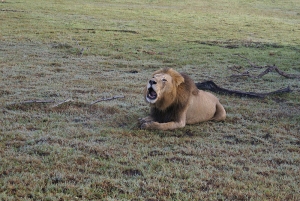
Saturday, January 1. 2011
 Date: Date: Sat, 1 Jan 2011 05:36:49 +0000
Sender: American Scientist Open Access Forum
From: Alma Swan
Subject: Open Access mandates growth
The final picture for the adoption of mandatory OA policies for 2010 is now available. The graph showing the cumulative growth of mandates over the last 9 years can be found on the EOS (Enabling Open Scholarship) and OASIS sites.
From early 2011 the graph will be generated automatically by EPrints' ROARMAP service: http://roarmap.eprints.org
It will be announced shortly when that site replaces http://www.eprints.org/openaccess/policysignup/ as the place to register new mandates by institutions, funders and departments as well as the place
to find the up-to-date version of the graph for advocacy work.
Finally, the growth of policies during open Access Week 2010 was monitored
and is recorded here: http://bit.ly/anUWms and here: http://bit.ly/a4dynw. Alma Swan
OASIS (www.openoasis.org)
EOS (www.openscholarship.org)
Key Perspectives Ltd, Truro, UK (www.keyperspectives.co.uk)
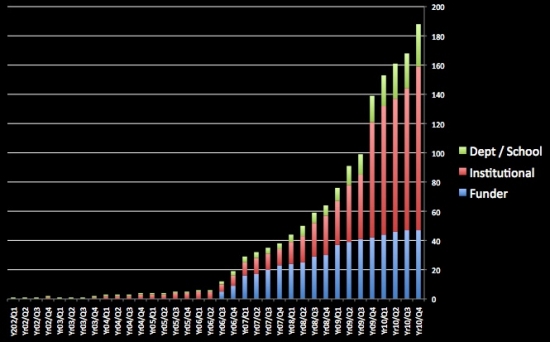
Tuesday, November 30. 2010
 Eight new Green OA mandates bring ROARMAP's total institutional/departmental/funder mandates to 182 -- for a grand total of 252 if we include the 70 thesis mandates. (More are coming soon, especially from Portugal.)
Here are the November 2010 mandates:
Institutional Mandates:PORTUGAL: Universidade de Lisboa
SPAIN: Universidad Politécnica de Madrid
USA: United States Department of Agriculture (USDA) Departmental/Faculty/School Mandates:USA: Harvard Divinity School
USA: Arizona State University Libraries Thesis Mandates:ITALY: Università degli Studi di Salerno
USA: Virginia Tech
USA: San Jose State University
Sunday, November 21. 2010
Saturday, October 30. 2010
 Keynote Address: 19th Hellenic Conference of Academic Libraries," Scientific communities and libraries in a world of social networking and synergies," Panteion University, Athens, Greece, November 4 2010
The One Sure Way To OA
Stevan Harnad
Canada Research Chair in Cognitive Sciences
Université du Québec à Montréal
CANADA
&
School of Electronics and Computer Science
University of Southampton
UNITED KINGDOM
ABSTRACT: When research is accessible free for all on the web (Open Access, OA) it is used and cited substantially more than if it is accessible only to users whose institutions can afford to subscribe to the journal in which it is published. This is called the OA Impact Advantage. Researchers, their institutions, their funders, the tax-paying public, and research itself all benefit from this enhanced research impact. Rich and diverse new metrics of research impact are being designed to measure and reward it, in research evaluation and funding. There are two ways to provide OA: by publishing in an OA journal that makes it free for all online ("Gold OA") or by publishing in any journal at all and making it free for all by self-archiving the final, refereed draft in the author's institutional repository ("Green OA"). The percentage of research that is made OA is only about 20% until and unless the author's research institution or funder mandates that research must be made OA, in which case the rate rapidly rises toward 100%. Only Green OA can be mandated. Hence the one sure way to OA is to mandate Green OA self-archiving.Gargouri, Y., Hajjem, C., Lariviere, V., Gingras, Y., Brody, T., Carr, L. and Harnad, S. (2010) Self-Selected or Mandated, Open Access Increases Citation Impact for Higher Quality Research. PLOS ONE 5(10) e13636
Harnad, S. (1990) Scholarly Skywriting and the Prepublication Continuum of Scientific Inquiry Psychological Science 1: 342 - 343
Harnad, S. (1995) Universal FTP Archives for Esoteric Science and Scholarship: A Subversive Proposal. In: Ann Okerson & James O'Donnell (Eds.) Scholarly Journals at the Crossroads; A Subversive Proposal for Electronic Publishing. Washington, DC., Association of Research Libraries, June 1995.
Harnad, S. (2001) The Self-Archiving Initiative. Nature 410: 1024-1025
Harnad, S., Brody, T., Vallieres, F., Carr, L., Hitchcock, S., Gingras, Y, Oppenheim, C., Stamerjohanns, H., & Hilf, E. (2004) The Green and Gold Roads to Open Access. Nature Web Focus.
Harnad, S. (2007) The Green Road to Open Access: A Leveraged Transition. In: Anna Gacs. The Culture of Periodicals from the Perspective of the Electronic Age. L'Harmattan. 99-106.
Harnad, S. (2008) Waking OA’s “Slumbering Giant”: The University's Mandate To Mandate Open Access. New Review of Information Networking 14(1): 51 - 68
Harnad, S. (2009) Open Access Scientometrics and the UK Research Assessment Exercise. Scientometrics 79 (1)
Harnad, S. (2009) The PostGutenberg Open Access Journal. In: Cope, B. & Phillips, A (Eds.) The Future of the Academic Journal. Chandos
Harnad, S. (2010) No-Fault Peer Review Charges: The Price of Selectivity Need Not Be Access Denied or Delayed. D-Lib Magazine 16 (7/8)
Harnad, S. (2010) The Immediate Practical Implication of the Houghton Report: Provide Green Open Access Now. Prometheus 28: 55-59
Sale, A., Couture, M., Rodrigues, E., Carr, L. and Harnad, S. (2010) Open Access Mandates and the "Fair Dealing" Button. In: Dynamic Fair Dealing: Creating Canadian Culture Online (Rosemary J. Coombe & Darren Wershler, Eds)
Monday, October 11. 2010
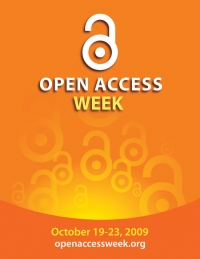 University of Southampton University of Southampton/ EPrints is launching a week-long Open Access Mandate Adoption Challenge for OA Week.
On October 18, the first day of OA week, the results of a study were published in PLoS ONE demonstrating that the well-known higher probability of being used and cited for research that has been made OA is indeed caused by the OA itself, and not an artifact of a researcher bias toward self-selectively making research OA that has a higher probability of being used and cited. The proof is that when OA is mandated by researchers' institutions for all research output, the OA citation advantage is just as great as for self-selective OA.
Self-selective OA levels today vary between 5-25% of research output, whereas when mandated, OA levels jump to 60% and rise toward 100% within a few years of mandate adoption.
The implication of these findings is that -- in order to maximize research usage, citation and impact for the benefit of the tax-paying public that funds the research -- all research institutions and funders should mandate making all their research output OA.
Representatives of universities, research institutions and research funders the world over that have adopted (or are planning to adopt) an OA mandate are invited to register their policy in ROARMAP (the Registry of Open Access Material Archiving Policies) as a show of force during OA week, setting an example to encourage other institutions and funders worldwide to do likewise.
If you know of an OA mandate -- already adopted or proposed -- that has not yet been registered in ROARMAP, please register it (or encourage a relevant official to register it).
Please register your mandate in ROARMAP HERE
Progress in mandate growth during OA week is being charted by Dr. Alma Swan (a Program Advisor for OA Week) below as well as in the Open Access Information Sourcebook OASIS [reaches growth chart directly], EnablingOpenScholarship EOS [click here twice to get to growth chart] and elsewhere.


Friday, October 8. 2010
DuraSpace Blog: "A recent Intechweb article, “MIT Makes All Faculty Publications Open Access”, suggests that MIT’s #3 ranking among the top 200 universities by the Times Higher Education World University Rankings may be related to both MIT’s OA policy and to the actual ability to access MIT’s research output on the Web through DSpace@MIT which now houses nearly 30,000 digital items."
 Traditional Publication: Nontraditional Access-Provision Traditional Publication: Nontraditional Access-Provision
Huge congratulations to MIT! But a slight correction (of the Intechweb article):
What MIT has done is to mandate that the author’s final draft of all MIT articles published in peer-reviewed journals should be self-archived in MIT’s Open Access Institutional Repository. It is indeed very likely true that the “ determination of MIT to shift from the old tradition … may be the clue to becoming ranked third among world’s top 200 universities.” The enhanced uptake, usage and impact resulting from this enhanced access is the factor that has helped enhance other universities’ rankings too (e.g., those of U. Southampton, the first to mandate OA self-archiving).
But the shift that has occurred at MIT and Southampton to enhance their impact rankings is definitely not a “ shift from the old tradition of publishing model to a new publishing paradigm which relies on internet technology”! MIT and Southampton authors continue to publish exactly as they have done all along — in the best peer-reviewed journals whose quality standards their research can meet. And just about all journals today “rely on internet technology.”
No, the shift is that of supplementing the old tradition of publishing in an established peer-reviewed journal with the new tradition of self-archiving the author’s final, accepted draft, so that all researchers can access, use, apply and cite their findings in further research, and not just those whose institutions can afford to subscribe to the (traditional) journals in which they happen to have been published.
Credit where credit is due!
Stevan Harnad
American Scientist Open Access Forum
|
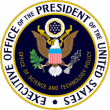


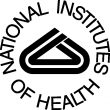





 Eight new Green OA mandates bring
Eight new Green OA mandates bring 






